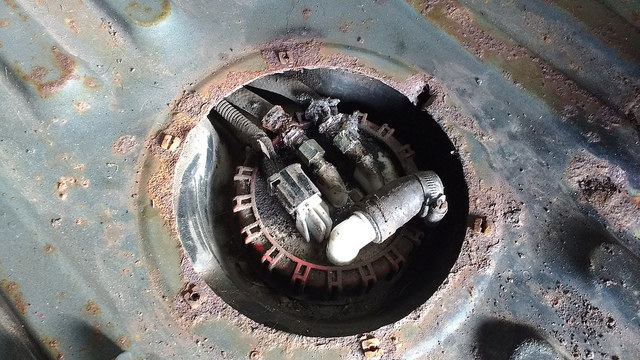A friend put his Discovery 1 in for it’s MOT recently. All was going swimmingly (relatively, for a 20-year old Disco) until one of the fuel lines sprung a leak whilst it was up on the ramp. That’ll be a fail, then.
Once I’d stopped laughing (but not before I’d stopped slagging him off about it) I said I’d give him a hand sorting it out.
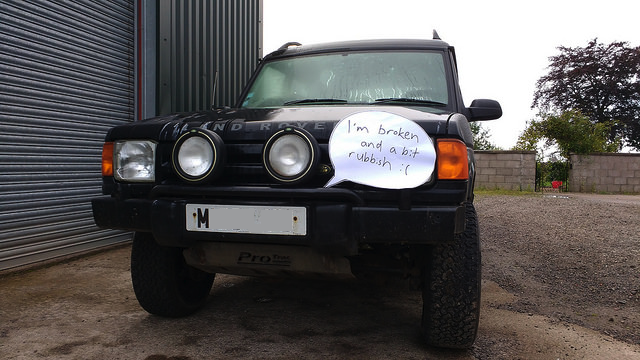
It’s a 3.9 V8 with the Lucas 14CUX (hotwire) fuel injection system. Unlike a 300tdi diesel of the same era, where the fuel is sucked from the tank by the lift pump, the pump in these is in the tank. It’s a (relatively, compared to a carb setup) high pressure system, the in-tank pump supplies pressure directly to the fuel rail via the supply line. There’s a pressure relief valve at the fuel rail outlet which regulates the rail pressure to a max of ~37psi, and there’s a return line to take excess fuel back to the tank from the regulator.
The fuel lines are mostly steel, with rubber sections in areas where there is likely to be vibration. They run along the top of the right hand chassis rail, from the fuel tank at the rear to the fuel rail at the back of the plenum chamber. The steel parts don’t seem to have been very well protected from the elements, as these were seriously rusty.
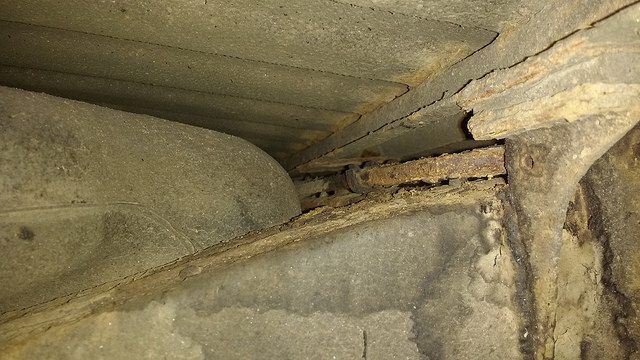
The leak in this case was because rust had weakened the pipe enough that the supply line burst. Both the supply and return pipes were in poor condition and needed to be replaced.
Replacement OEM fuel lines were out of his budget, so the plan was to use standard fittings and hose.
The fuel tank fittings on a disco 1 are on top of the tank. They’re accessed by removing the hatch in the boot floor. The supply line is on the left, next to the power supply for the pump. The line on the right is the return.

First job was to remove the old lines and work out what fittings we needed.
There’s not a lot of room to get at the original pipes. Note the stain from leakage!
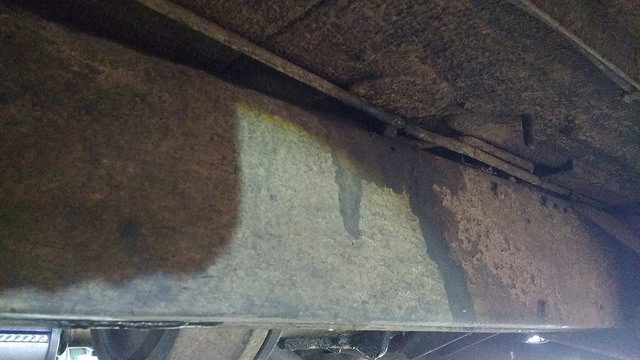
Once the lines were out, we could check out the fitting situation.
The thread on all the fuel line fittings was M12x1 mm. The actual fitting I didn’t recognise – neither did the staff at my local Pirtek, so I’m going to suggest it’s not a common type! The principle is fairly standard, there’s a sealing olive and a loose female threaded part on the fixtures, and a female seal cone on the hose fittings.
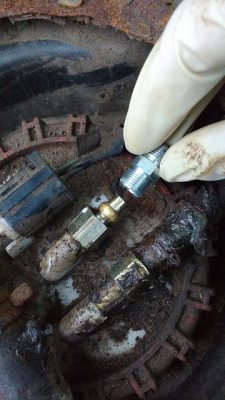
Pirtek supplied male-male M12x1 mm adaptors , which didn’t quite fit – the bore didn’t go deep enough into the fitting to clear the ‘barb’ sticking past the olive on the fixtures. The olive wouldn’t engage the seal cone, so the fitting wouldn’t create a seal if used in this way:
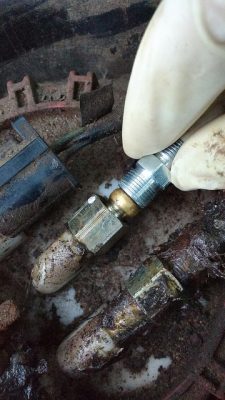
This was sorted by drilling the bore on the fittings a bit deeper to allow the olive to meet the seal cone.
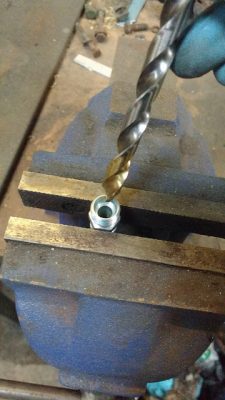
Modified fitting on the right:
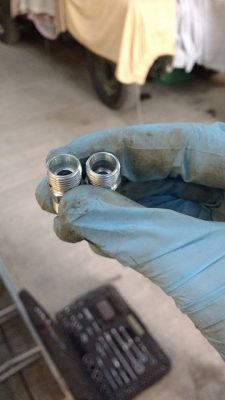
We then fitted standard barb-type hose adaptors for 5/16″ fuel hose to the M12x1 adaptors.
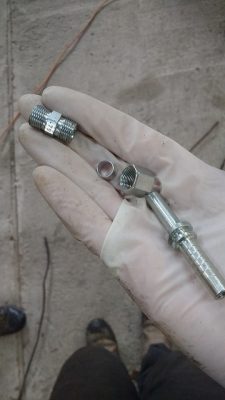
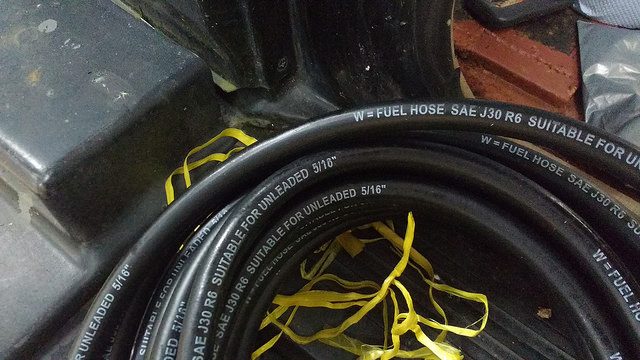
The supply fitting on the fuel rail was the same type as on the tank, the return was a push-fit affair.
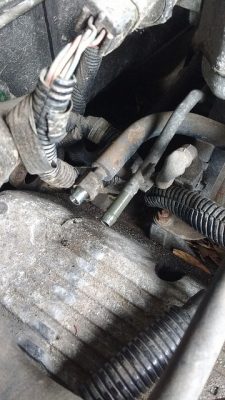
The fuel filter in the wheel arch looked decidedly crusty, so it was removed and replaced.
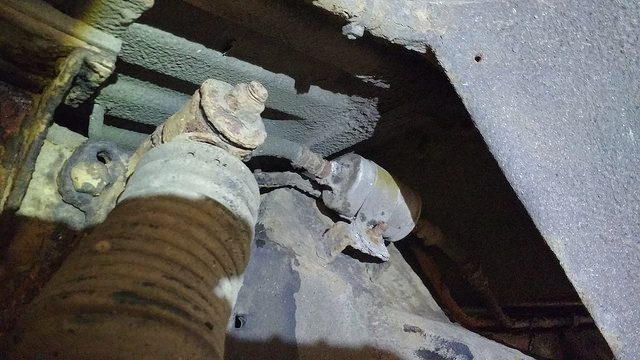
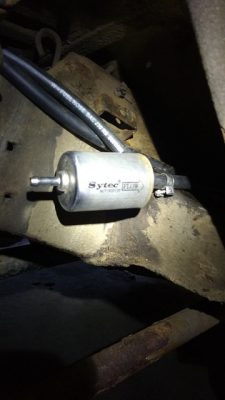
Once the lines were cut roughly to length and put loosely in place, any areas where they passed close to bodywork were shrouded in corrugated pipe sheathing.
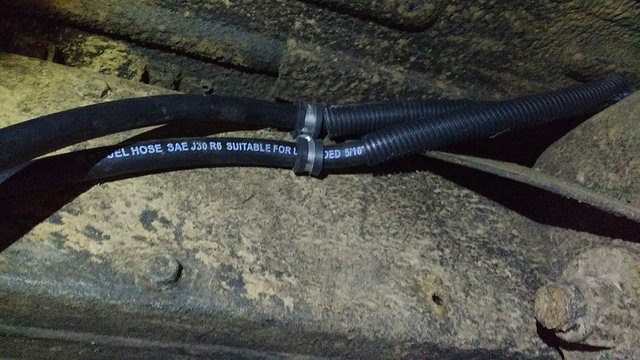
It was then a case of finalising the hose routing and attaching with p-clips, making sure the lines weren’t going to chafe anywhere. Most of the run went along the side of the chassis rail. It’s more vulnerable here than on top, but to get access to fit to the top of the rail we’d have needed to lift the body. Time was of the essence, so that wasn’t the choice method.
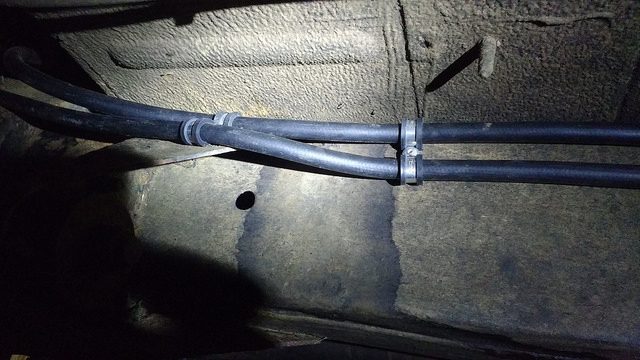
A section of heat shield was required where the lines went past the exhaust – I didn’t have any handy so the owner was given strict instructions to sort it when he got home!
And that was that. It lived to drive another day (and get an MOT, more importantly).
Apparently the cost of fitting OEM fuel lines has caused some of these to be written off. That’s a shame. Providing good quality fuel line and hose clamps are used, along with some common sense when fitting them, a repair using standard fuel line can help keep one of these on the road on a budget that bit longer.
